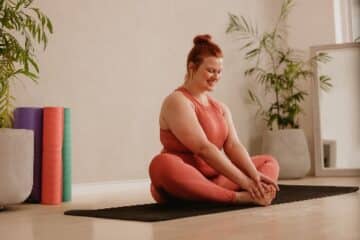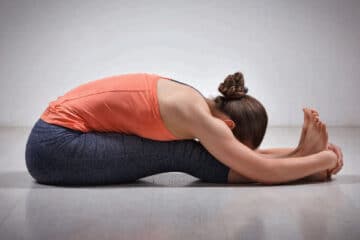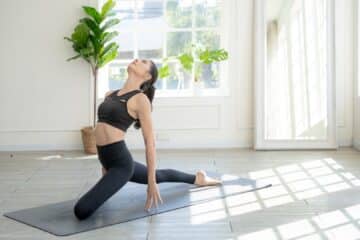In the realm of yoga, few poses embody the essence of strength, balance, and tranquility as profoundly as the Supported Shoulder Stand, or Salamba Sarvangasana.
This iconic inversion, revered for its multitude of benefits, holds the power to elevate both body and mind.
From improving circulation and digestion to calming the nervous system, the Supported Shoulder Stand offers a holistic approach to wellness that resonates deeply with practitioners of all levels.
Body:
Understanding Supported Shoulder Stand (Salamba Sarvangasana):
Supported Shoulder Stand, often referred to as the “Queen of Asanas,” is an inversion posture that involves lifting the legs and torso vertically upward, supported by the shoulders and upper arms.
Unlike the traditional version, which requires significant strength and flexibility, the supported variation utilizes props such as blankets, bolsters, or yoga blocks to provide stability and support.
How to Practice Supported Shoulder Stand:
- Prepare Your Props: Gather your props—a firm bolster, two yoga blocks, and a folded blanket. Place the bolster horizontally on your mat, aligning it with the length of your spine. Stack the blocks at their lowest height at the top end of your mat.
- Lie Down: Sit on the edge of the bolster with your knees bent and feet flat on the floor. Slowly lower yourself onto the bolster, ensuring that it supports your entire spine from the lower back to the head.
- Lift Your Legs: Extend your legs upward toward the ceiling, keeping them parallel to each other. Use the support of the blocks under your hips to lift your pelvis slightly higher, allowing your legs to move closer toward your head.
- Support Your Back: Slide the folded blanket under your shoulders for additional support and comfort. Your arms should rest on the floor beside your body, palms facing down.
- Adjust and Breathe: Once you’re in the pose, take a moment to adjust your alignment and ensure that your neck and throat are relaxed. Close your eyes and take slow, deep breaths, allowing your body to surrender to the support of the props.
- Hold and Release: Remain in the pose for 1-3 minutes, gradually increasing the duration as you become more comfortable. When you’re ready to release, slowly lower your legs back down to the floor and roll onto your side before coming to a seated position.
Benefits of Supported Shoulder Stand:
- Improves Circulation: Inverting the body encourages venous blood flow from the lower extremities back toward the heart, promoting circulation and relieving swelling and fatigue in the legs.
- Stimulates Thyroid Function: The compression of the throat in this pose stimulates the thyroid gland, which regulates metabolism and energy levels.
- Calms the Nervous System: Supported Shoulder Stand has a calming effect on the nervous system, making it beneficial for reducing stress, anxiety, and insomnia.
- Enhances Digestion: The gentle compression of the abdominal organs in this pose can improve digestion and alleviate constipation.
Precautions and Modifications:
- Neck Support: If you experience discomfort in your neck, place an additional folded blanket under your shoulders or use a smaller prop to elevate your torso less.
- Shoulder Injury: Individuals with shoulder injuries or limitations should approach this pose with caution and may choose to practice a gentler variation or skip it altogether.
- Menstruation and Pregnancy: Women should avoid practicing Supported Shoulder Stand during menstruation and pregnancy, as it may interfere with blood flow and put undue pressure on the abdomen.
Conclusion
Supported Shoulder Stand invites practitioners to explore the transformative power of inversion, both physically and mentally.
By embracing the support of props and surrendering to the flow of breath, individuals can experience a profound sense of rejuvenation and balance.
Whether you’re seeking improved circulation, enhanced vitality, or inner peace, this iconic pose offers a pathway to elevated well-being and self-discovery.



